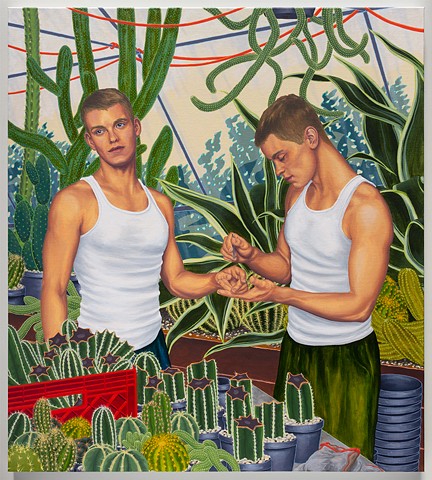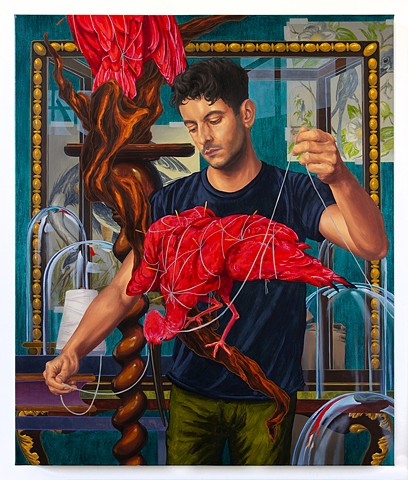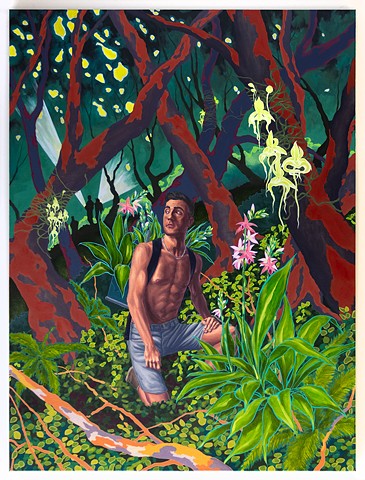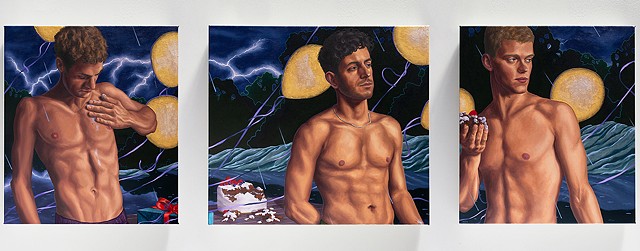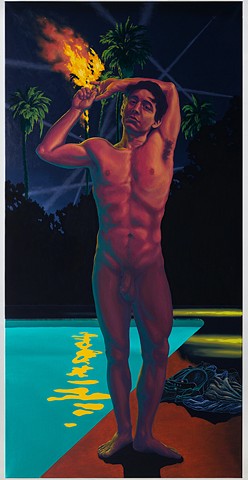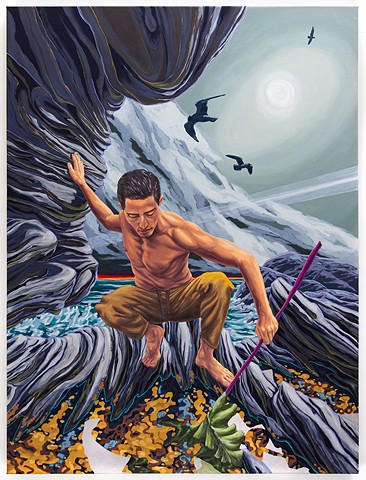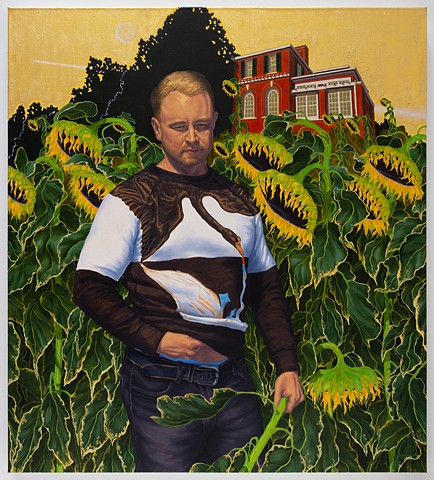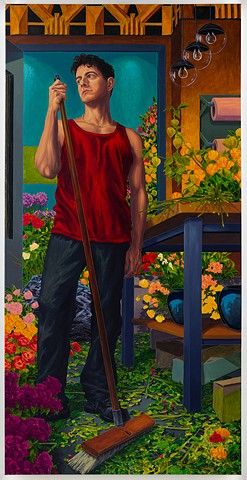"Lush & Violent"
Oil on linen. 2022-2023
This series grew out of a fascination with the timeless pairing of suffering and beauty in art. So often depicted, described, and circumambient throughout art history - the "sweetness of this excessive pain" in Bernini's The Ecstasy of St. Teresa or in depictions of a wounded nude St. Sebastian, the aged Monet defiantly continuing work on his waterlily canvases as World War I front lines crawl toward him and his country home - the combination's theatricality emphasizes a coupling pervasive and deeply human within this particular emotional narrative; that beauty is given dimension by pain.
The references and influences throughout the paintings are broad and supplemental rather than critical to explaining the work: Hilma af Klint and Jan van Eyck, religious allegorical paintings, disco, Leonardo's Codex Leicester, man's persistent effort to rearrange nature and the consequence of its inherent indifference and power.
In the painting "Laschia Ch'io Pianga," a taxidermist, working through the final stages in a preparation of a pair of Scarlet Ibis, is confronted by opposing experiences; the cold brutality of his task and the beauty that it is meant to immortalize. The title and inspiration for the work are taken from Handel's 1711 aria of the same name, emblematic of the series with its famously beautiful melody wrapped around a mournful libretto:
Let me weep over
my cruel fate,
and let me sigh for liberty.
May sorrow shatter
these chains,
of my torments
out of pity alone.
